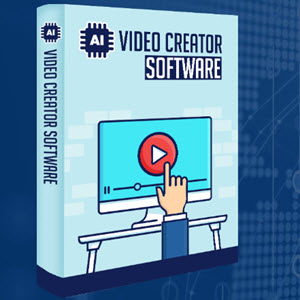What Do Ab Rockers Ginsu Knives Mercedes and Kitchen Appliances Have in Common
If you don't know the answer to the above question, perhaps a few more hints will help. What if we added Monsters, Excite@Home, and the Indy Races to the list? That's right, all of the above are

sponsors of infomercials—an advertising form that has long been considered appropriate only for Ronco Vegematics, Whopper Choppers, and Dione Warwick's Psychic Friends.
The infomercial, or—as those in the industry like to refer to it—long-form advertisement, is a 30- to 60-minute television segment designed to provide the viewer with a great deal of information and detail about a product or service. In effect, infomercials are long commercials designed to provide information as well as to sell. You will usually see long-form ads late at night, in the wee hours of the morning, or at any time when the advertising rates are at their lowest. As a result, this ad form has long been the domain of smaller, direct-response companies. But all that is changing.
The new infomercials are no longer low-budget productions that attempt only to sell, sell, sell. And low-audience spots are no longer their only medium. Mercedes-Benz recently aired an infomercial for its E320 on national cable networks. The long-form ad, titled "The Mark of Passion," was very expensive looking and plugged the Starmark used-car program through archival footage and testimonials from very satisfied owners. Excite's objective was to provide information on its complex products and services and to demonstrate the advantages of broadband. Monster.com's "Monster Show" included a number of specific features, such as the "Learn to Love Monday Morning Quiz," which measures satisfaction with one's current employer. While the infomercials had a sales component, other measures of success were also employed. Mercedes's ads directed the viewers to learn more about the Starmark program by calling a toll-free number or logging on to the Starmark website (70 percent of the viewers used the website). Once there, information was collected for the development of a database and for mailings with additional information. Monster tracked activity on various aspects of the website.
But why use an infomercial for household appliances? Can't they just be sold through regular advertising and retail outlets? And, at an average price of $369.95 per appliance, isn't that a bit expensive for this medium? No and no says Brian Maynard, director of integrated marketing for KitchenAid, a 90-year-old company out of Benton Harbor, Michigan. The highly competitive market requires different thinking and different ways to drive sales. The initial infomercial—which was designed to drive retail and break even on direct response—exceeded expectations by 60 to 70 percent. But, once again, it was not your typical infomercial. Set in a very expensive kitchen, the infomercial was portrayed to be more like a cooking show than a commercial. Well-known chefs, and two hosts from PBS cooking shows, were brought in, and additional IMC tools were employed. Traditional ads air between the two segments of the long-form ad. The company's website was enhanced to stimulate selling, and sales promotions featuring "free gifts" of aprons, spatulas, and bowl covers were included. Buyers also received three free issues of Food & Wine. And let's not forget the website's recipe page—with instructions written in "KitchenAid-ese." For consumers reluctant to purchase on their first visit, direct-mail pieces were sent. The results speak for themselves: 45 percent of the company's mixers are now sold through the website. Retail sales are up, and many of the viewers already own mixers but come to buy attachments.
And now about those Indy races. The Indy races include a circuit of 12 races plus the Indianapolis 500. Given that the races are not as well known as the NASCAR series, the goal of the infomercial was to educate racing fans on the Indy races' strengths relative to NASCAR. Included are shots from inside the race cars, interviews with drivers like Al Unser Jr., and testimonials from fans. Besides an overall increase in sales, attendance has been up by 15 percent at every track in areas where the infomercials have run preceding the races. And you thought infomercials were only for Tummy Tuckers.
Sources: Charles Wesley Orton; "KitchenAid Shares Its Recipe for DRTV," Response, January 2002, pp. 26-30; Bernard Stamler, "Indy Racing Uses Infomercial to Lure Viewers to the Track," New York Times.com, Aug. 8, 2001, pp. 1-2; Evantheia Schibsted, "Ab Rockers, Ginshu Knives, E320s," Business 2.0, May 29, 2001, pp. 46-49.
As marketers continue to explore options for delivering their messages, the media landscape is itself changing. The addition of new options like the Internet and interactive media is one change that has occurred. Another is the variety of innovations taking place in regard to existing media and the companies using them. Earlier in this text we discussed the changing role of support media such as product placements and movie theater advertising. The examples in this chapter's lead-in demonstrate one of the changes occurring in the direct-marketing area, specifically in regard to infomer-cials. But it is important to realize that the infomercial is only one of the tools used by direct marketers.
Direct M a r ketin g While most companies continue to rely primarily on the other promotional mix elements to move their products and services through intermediaries, an increasing number are going directly to the consumer. These companies believe that while the traditional promotional mix tools such as advertising, sales promotion, and personal selling are effective in creating brand image, conveying information, and/or creating awareness, going direct with these same tools can generate an immediate behavioral response. Direct marketing is a valuable tool in the integrated communications program, though it seeks somewhat different objectives.
In this chapter, we discuss direct marketing and its role as a communications tool. Direct marketing is one of the fastest-growing forms of promotion in terms of dollar expenditures, and for many marketers it is rapidly becoming the medium of choice for reaching consumers. Stan Rapp and Thomas Collins, in their book Maximarketing, propose that direct marketing be the driving force behind the overall marketing pro-gram.1 Recently, others have agreed. Ropp and Collins present a nine-step model that includes creating a database, reaching prospects, developing the sale, and developing the relationship. We begin by defining direct marketing and then examine direct-marketing media and their use in the overall communications strategy. The section concludes with a basis for evaluating the direct-marketing program and a discussion of the advantages and disadvantages of this marketing tool.
Continue reading here: Defining Direct Marketing
Was this article helpful?
Readers' Questions
-
Bisrat1 year ago
- Reply

